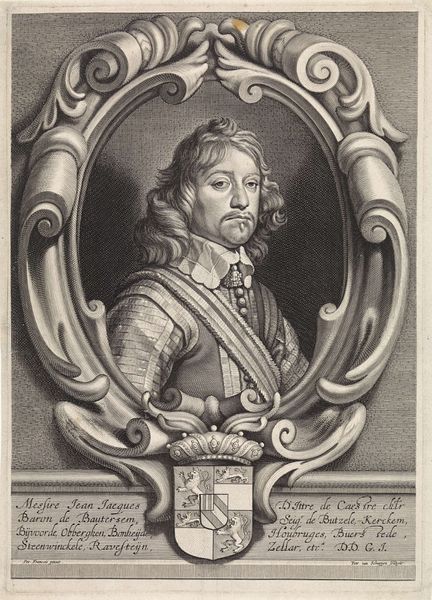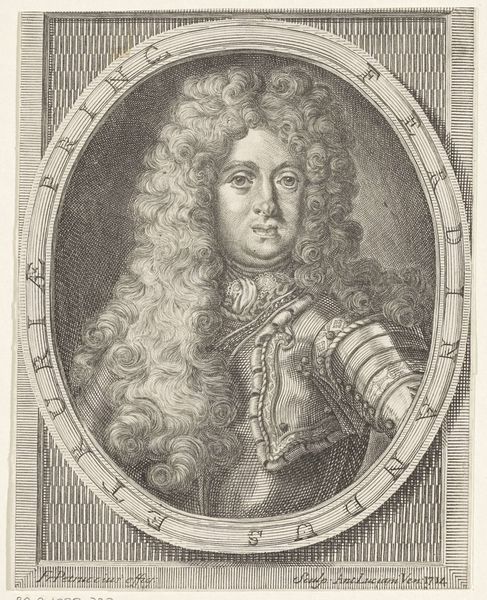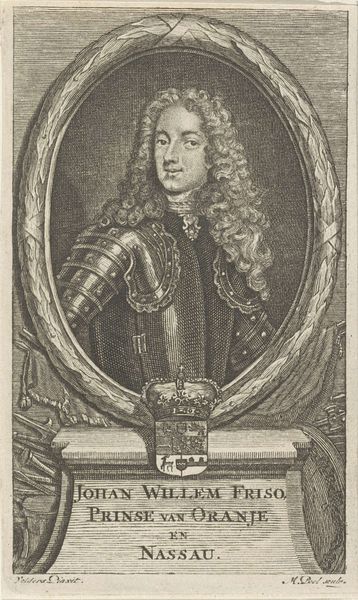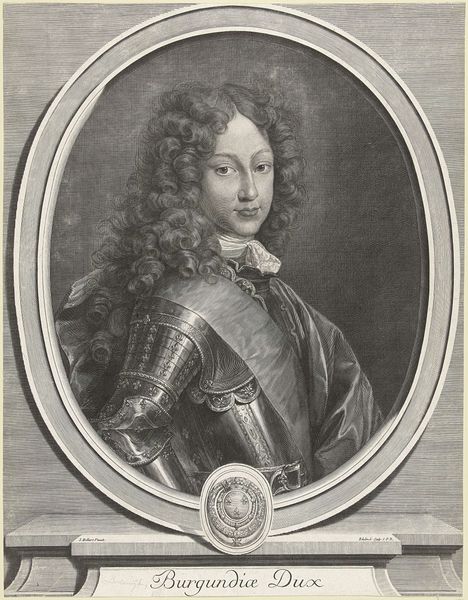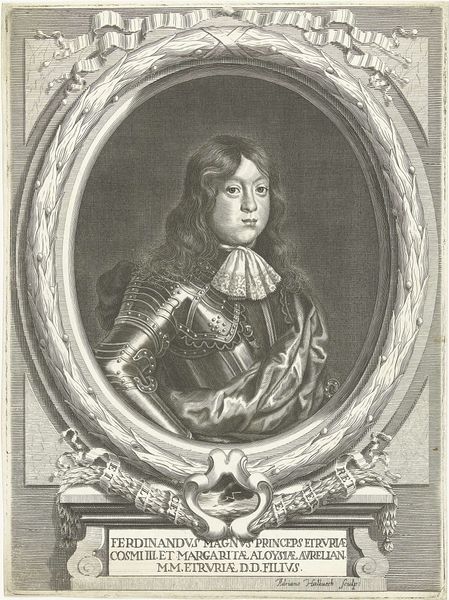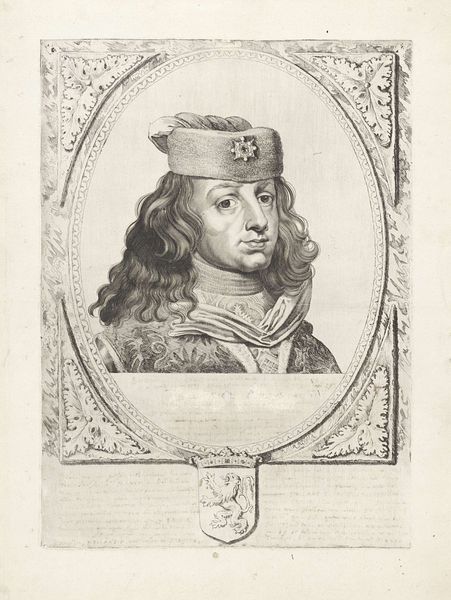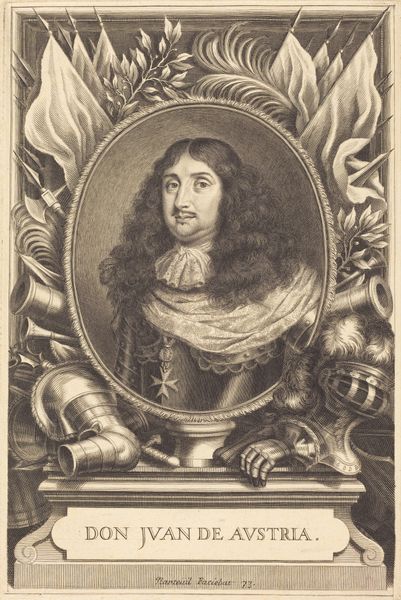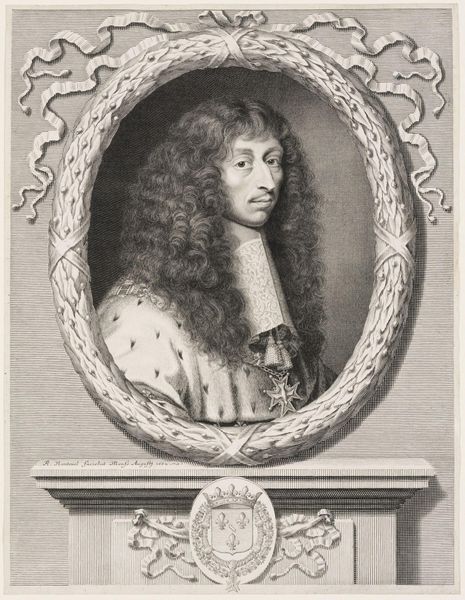
print, intaglio, engraving
#
portrait
#
baroque
# print
#
intaglio
#
history-painting
#
engraving
Dimensions: height 127 mm, width 87 mm
Copyright: Rijks Museum: Open Domain
Wenceslaus Hollar made this print of Alexander Roelants in 1664, using the etching technique. This painstaking process involves coating a metal plate with wax, then drawing through the wax to expose the metal. The plate is then bathed in acid, which bites into the exposed lines, creating grooves. The real labor begins with the printing itself. Ink is forced into the etched lines, the surface wiped clean, and then paper is pressed against the plate, transferring the image. Look closely, and you can almost feel the pressure exerted in this process. Consider the social context: prints like these were relatively inexpensive, a means of circulating images and ideas widely. Hollar's skill in rendering details, from the flowing hair to the ornate frame, speaks to the growing demand for accessible art, catering to a burgeoning middle class with an appetite for images. Ultimately, this etching reminds us that art is not just about representation, but also about production, labor, and the democratization of images.
Comments
No comments
Be the first to comment and join the conversation on the ultimate creative platform.

